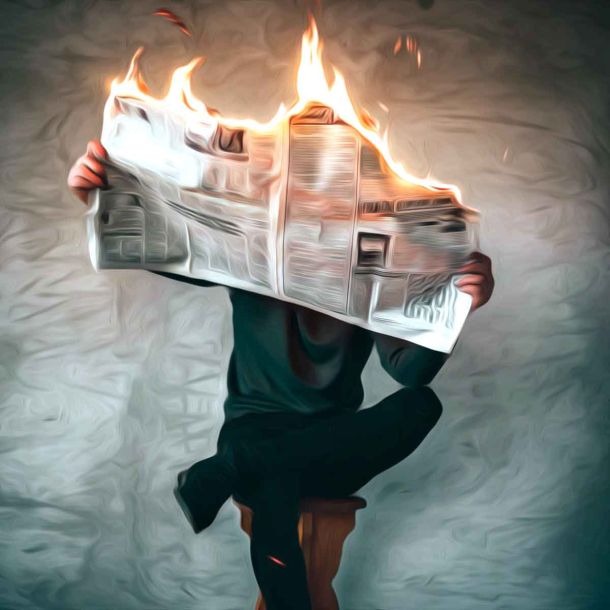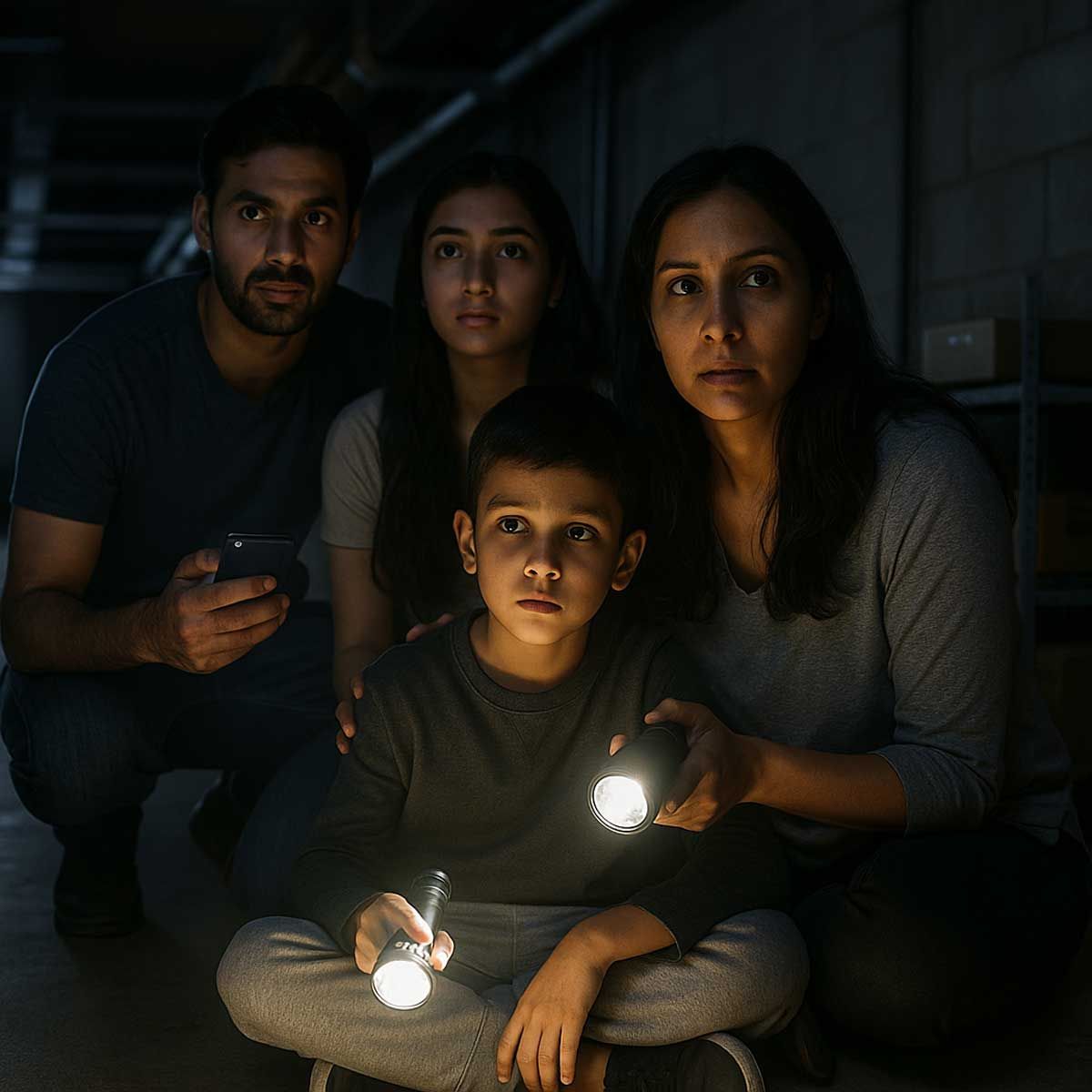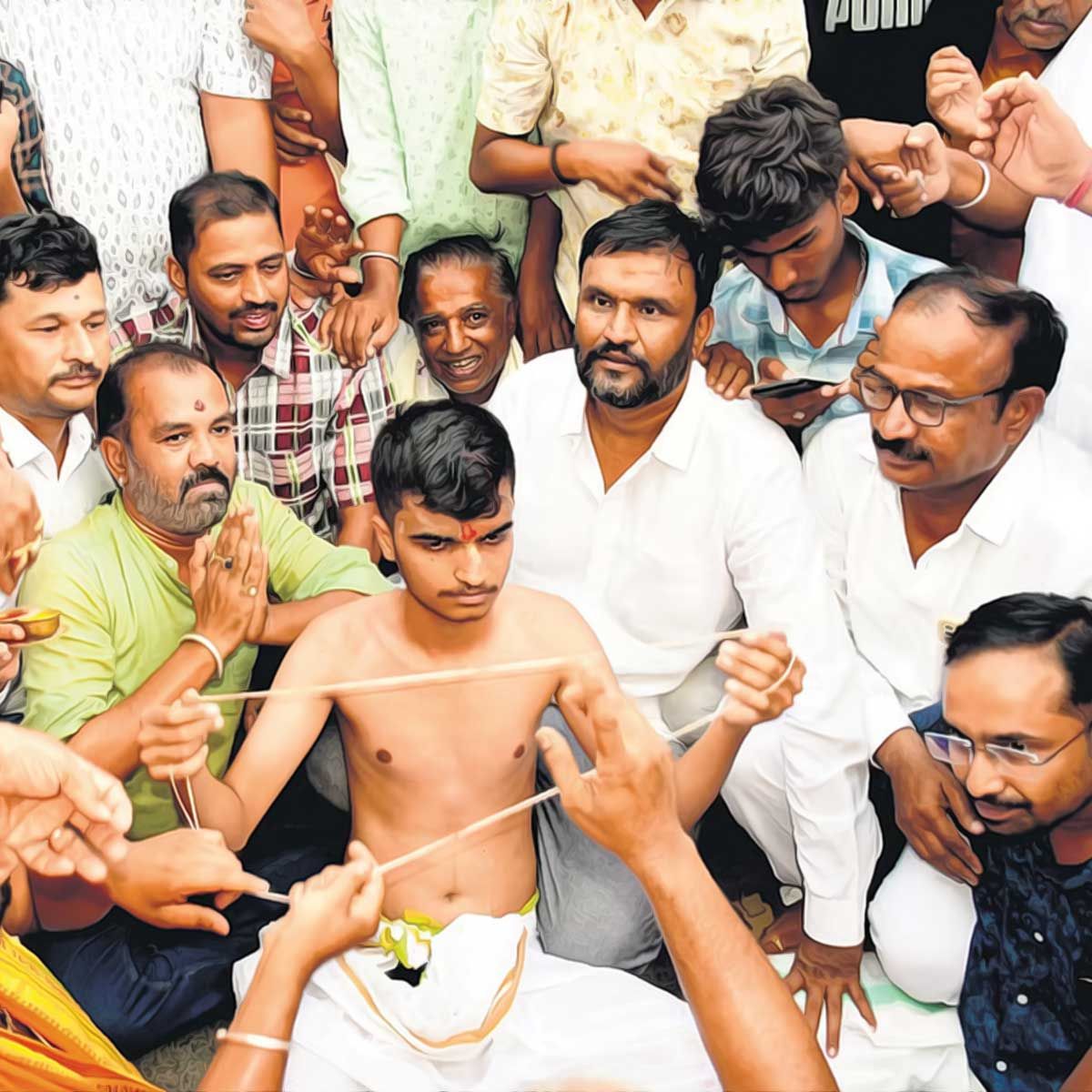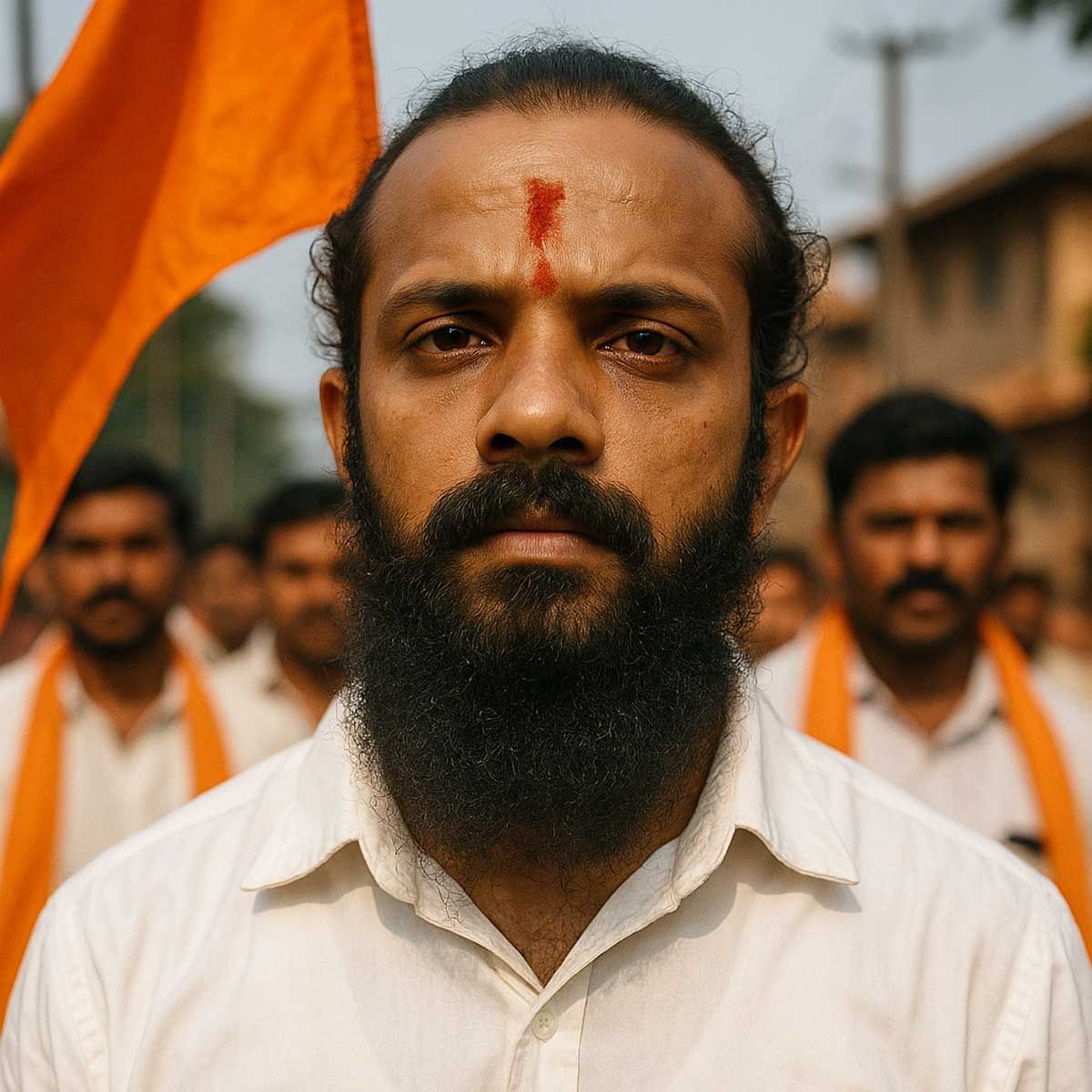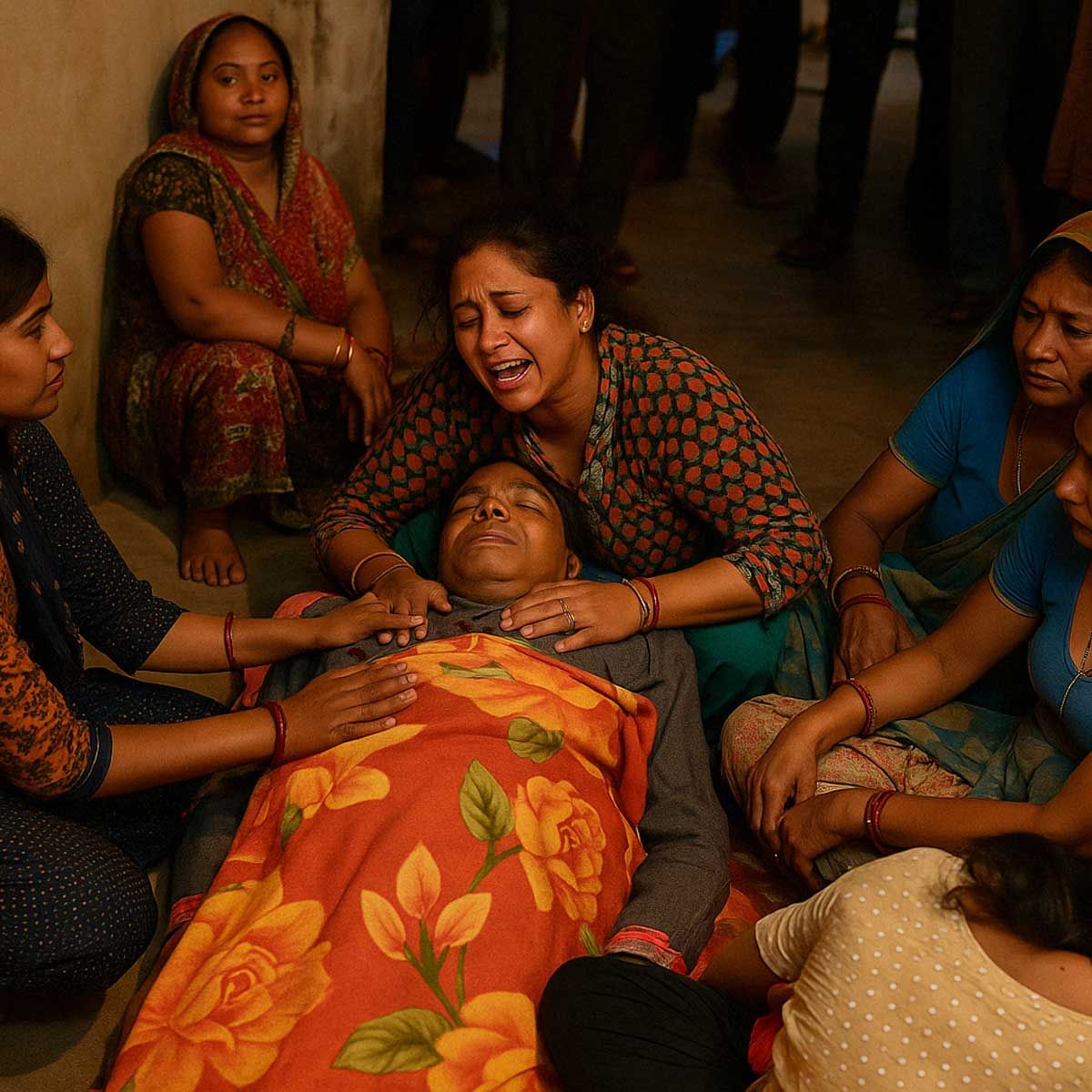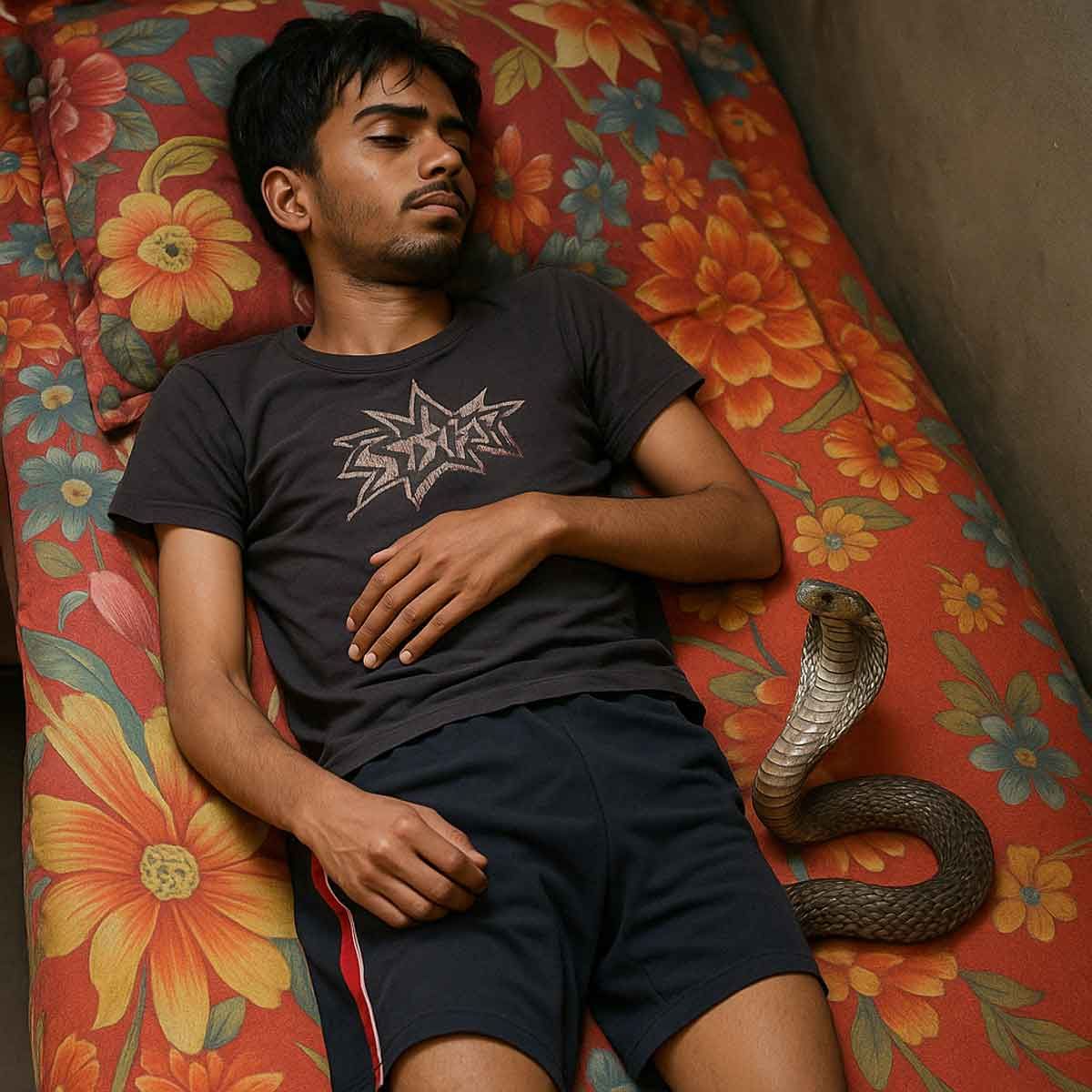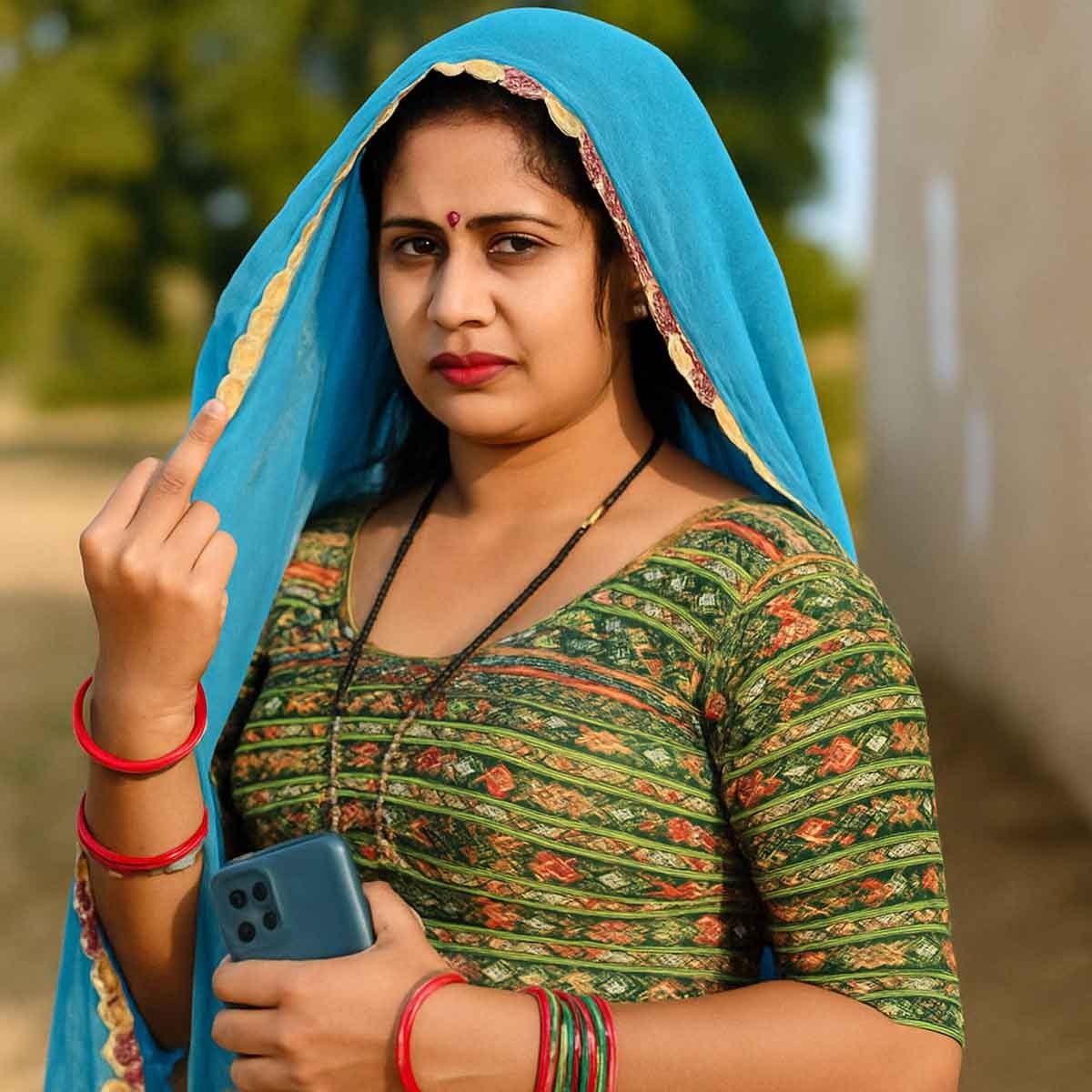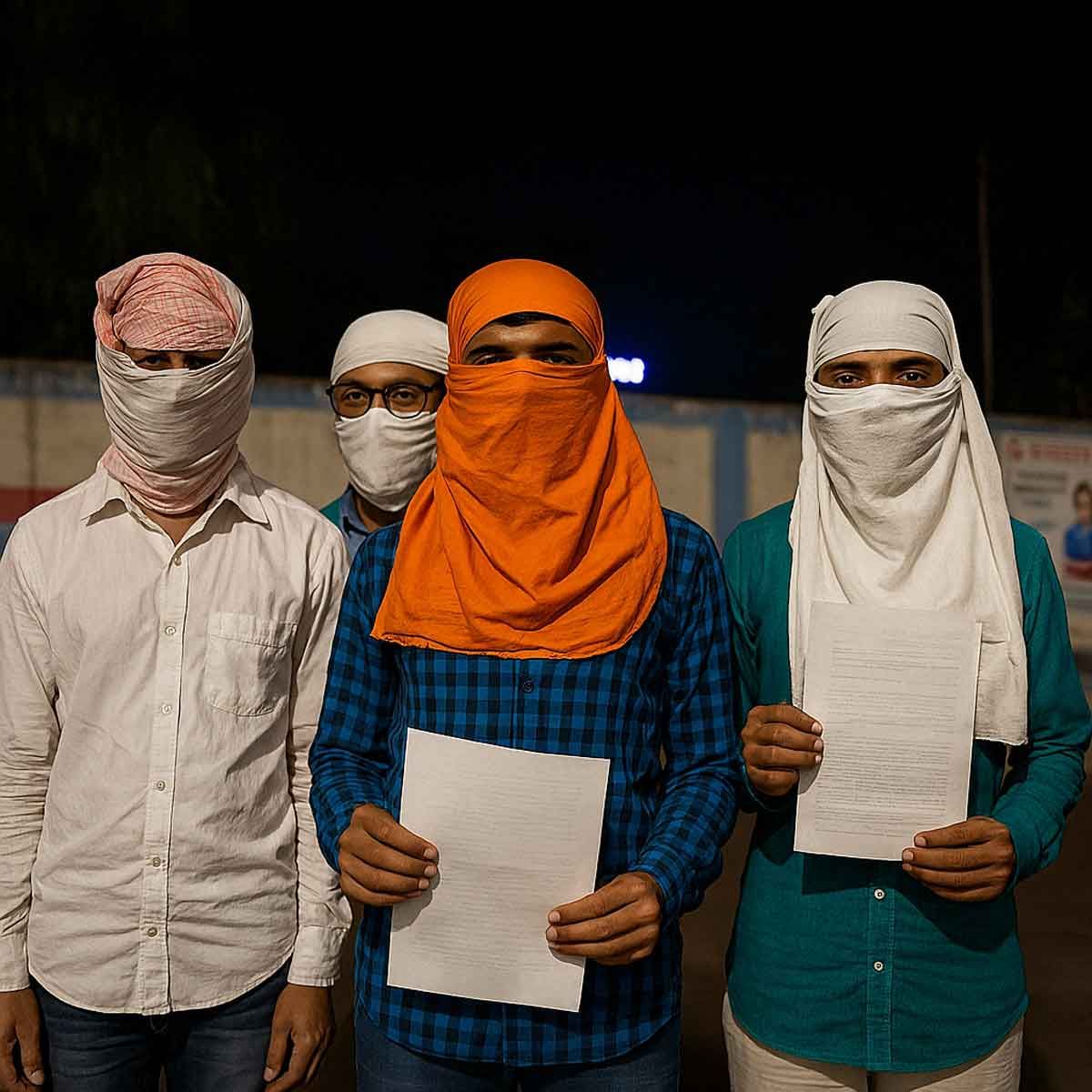More Coverage
Twitter Coverage
Satyaagrah
Written on
Satyaagrah
Written on
Satyaagrah
Written on
Satyaagrah
Written on
Satyaagrah
Written on
JOIN SATYAAGRAH SOCIAL MEDIA
"Study the past if you would define the future": Discover India's Cultural Legacy: Yuge Yugeen Bharat National Museum - a majestic panorama of 5000 years of Indian civilization & heritage, literature, science, evolution of empires, struggles, and triumphs
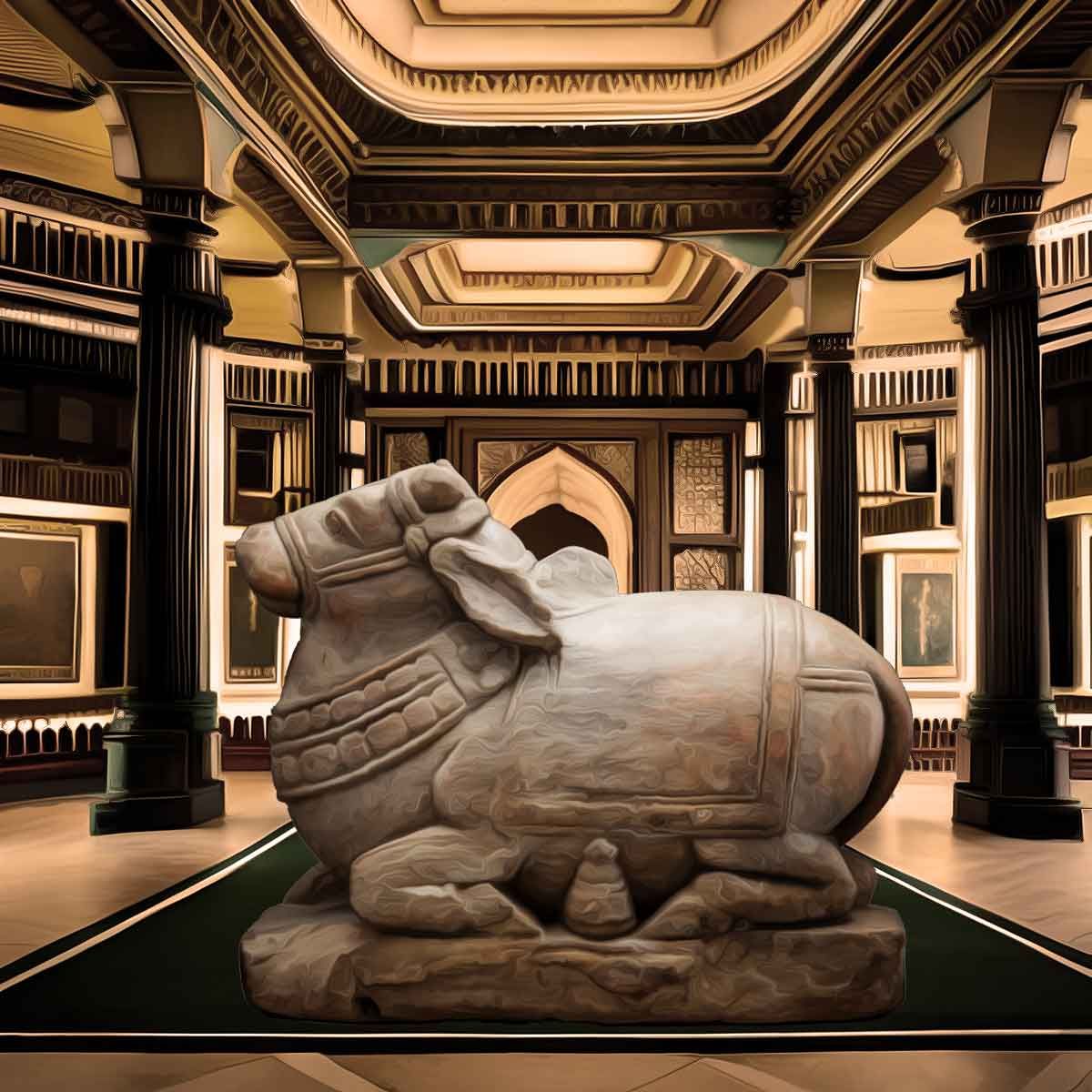
Embodying the pride and richness of our timeless heritage, India is all set to welcome the magnificent Yuge Yugeen Bharat National Museum. A brainchild of the Indian Government, this cultural behemoth stands as a testimony to the remarkable tapestry of Indian history and culture dating back over five millennia.
The location is just as iconic as its purpose - the North and South blocks of our nation's capital that were erected in the 1930s. It is intriguing to note that the South Block has been the operational headquarters of the Prime Minister's Office, the External Affairs Ministry, and the Defence Ministry. The North Block, on the other hand, has been housing the Finance and Home Ministries. The proposal to repurpose these historical buildings into museums was put forth by the government in 2021.
The museum's Sanskrit-derived name epitomizes "everlasting India", echoing the everlasting essence of the Indian civilization. The extensive space of 1.17 lakh square meters, with a remarkable count of 950 rooms spread across a basement, the ground, and two upper floors, is designed to accommodate numerous sections or 'khands'. Each 'khand' will meticulously unfold different chapters of the enduring journey of Indian civilization.
The Yuge Yugeen Bharat National Museum is poised to offer a comprehensive panorama of India's rich civilization spanning more than 5,000 years. With exhibits covering a broad spectrum - from Indian art, architecture, music, dance, literature, and philosophy to science, technology, and mathematics - the museum is set to be an all-encompassing hub for those who are intrigued by the multi-faceted richness of Indian history and culture.
Our honorable Prime Minister, Narendra Modi, brought this monumental project to the public's attention with a virtual walkthrough at the International Museum Expo on May 18. This virtual showcase provided an initial sneak peek into the grandeur that the National Museum is set to infuse into the Central Vista project.
|
Marking this historic inauguration, the Prime Minister also flagged off the three-day International Museum Expo 2023, an initiative by the culture ministry aimed at underlining the role of museums as vibrant cultural junctions that reconnect people with their shared histories and cultures. The three-day event promised an immersive cultural experience with master classes on various topics like archaeology, conservation, lighting, acoustics, and more, along with the launch of a graphic novel, an App-based game on museums for school children, and a live lab that introduced the audience to conservation processes.
Hosted at Pragati Maidan from May 18-20, the museum Expo also unveiled a charming mascot - a prehistoric dancing girl from Mohenjodaro, reimagined in the form of a wooden toy inspired by Tamil Nadu's famous Channapatna toys. Along with this, the event presented a directory of Indian museums, a pocket map of Kartavya Path, and a deck of 75 cards featuring various museums of India.
The Directory of Museums in India is a compilation of over 1,200 museums across the nation, painstakingly curated by the National Museum Institute. The pocket map of Kartavya Path serves as a guide to historically significant buildings in the vicinity, including the State Houses of Kota, Jaipur, and Bikaner that were erected during the British reign around India Gate.
Imbued with the pride of our timeless past, the soon-to-rise Yuge Yugeen Bharat National Museum is primed to encapsulate 5,000 years of the enigmatic Indian history.
The masterplan of the museum pays tribute to the radiance of diverse Indian eras, encapsulating the rich tapestry of our vibrant cultures, and our treasured flora and fauna. A magnificent entrance that introduces the nation's unique metallurgical traditions, like the ancient zinc extraction in Zawar, Rajasthan, sets the tone for the visitor's journey.
A comprehensive section is dedicated to the ancient Sindhu-Saraswati civilizations, concentrating on influential sites like Harappa, Mohenjo-daro, and Lothal. Another area will pay homage to our nation's varied fauna and flora, celebrating their pivotal role in shaping our culture.
|
Significant religious landmarks, sacred 'peethas', and temples find a space of honor in the exhibition, manifesting the spiritual legacy of our ancestors. Also, revered texts such as the Vedas, Puranas, and other significant manuscripts will be showcased, inviting visitors to immerse themselves in their profound wisdom.
Visitors will also be educated about the invaluable contributions of Indian scholars, including Charaka and Sushruta, who played critical roles in sculpting today's medical practices in India.
Each part of the museum will recount tales of glorious Indian empires such as the Mauryans, Guptas, and Kushans. Notable empires like the Rashtrakutas, Gurjara-Pratiharas, and the Palas will also be spotlighted for their contributions to nation-building.
The medieval section will shed light on various kingdoms of India, including the Solankis, Sisodias, Parmar, and numerous Rajput states. The cultural and artistic legacy, religious contributions, and triumphs of these kingdoms will be highlighted. Kingdoms extending from the Ahoms in the Northeast to the Karnata kingdom down South (commonly called the Vijayanagara dynasty) will also be represented, enhancing the learning opportunities for visitors.
The narrative then transitions from the stories of the Hoysala and Maratha kingdoms to contemporary India during the advent of British colonialism. The fifth section will be devoted to the arduous struggles of our freedom fighters, illustrating their sacrifices and resilience during the century of British occupation. This includes events like the Sannyasi rebellion of Bengal in 1770, and the 1857 rebellion, when the oppressed rose against the East India Company's rule.
From the two centuries of struggle to decolonize, the focus shifts to the immense effort undertaken by the nascent Indian state to restore its lost glory. The emphasis here is on the journey towards gaining civil rights, scientific advancements, and formulating the present Indian constitution. Eminent figures such as C V Raman, H J Bhabha, and J C Bose will be showcased as inspiring role models for the youth.
|
During the inauguration, the Prime Minister noted that a considerable part of our nation's heritage was lost during the long period of subjugation when ancient manuscripts and libraries were destroyed. This loss, he asserted, was not just India's but the world's. He criticized the lack of sufficient measures post-independence to resurrect and safeguard the nation's long-forgotten heritage and regretted the heightened impact due to citizens' lack of awareness.
However, he expressed contentment that several countries have started returning India's heritage, reflecting our growing global stature. He cited the return of stolen idols like Maa Annapurna, Mahishasurmardini, Nataraja from the Chola Empire, and a sword with Guru Hargobind Singh Ji's name. In the past nine years, he pointed out, around 240 ancient artifacts have been returned to India, marking a substantial increase compared to previous decades.
The PM urged global art lovers and museum professionals to intensify cooperation in this field, emphasizing that no unethically obtained artwork should find a place in any museum. He concluded with a pledge to preserve India's heritage and create a new legacy, emphasizing the importance of embracing our past and building cultural connections globally.
The Prime Minister discussed the unifying power of India's rich heritage and how sacred relics like those of Lord Buddha, now dispersed worldwide, are connecting his followers globally. He highlighted the government's recent initiatives like sending four holy relics to Mongolia on Buddha Poornima and receiving holy relics from Sri Lanka in Kushinagar.
He also presented an updated version of the famous wooden dancing girl, now in the distinct Chennapatnam art style, as the expo's mascot. He unveiled "A Day at the Museum", a graphic novel highlighting careers in museums, the Directory of Indian Museums, a pocket-sized map of Kartavya Path, and collectible museum cards.
Manuel Rabate, Director of Louvre Abu Dhabi, expressed gratitude for the invitation to the event and praised the Indian government's efforts to promote cultural growth. Optimistic about the future, he looked forward to witnessing more Indian historical relics and artifacts being discovered and showcased.
Exhibition
The exhibits will span an extensive array of topics, mirroring the vast scope and profundity of India's cultural lineage. Here are some pivotal displays that visitors can anticipate in the museum:
Indian Art: This section will house an extensive range of art pieces spanning different epochs of Indian history, offering a visual journey through the evolution of Indian art over centuries.
Architecture: The museum will spotlight significant architectural marvels from diverse periods of Indian history through models and images, underscoring the eclectic nature and opulence of Indian architectural traditions.
Music and Dance: The rhythm and movement of India will echo in this section as it chronicles various forms of music and dance that are woven into the fabric of Indian culture. The rich diversity and vibrancy of Indian performing arts will come alive here.
Literature: A special corner dedicated to Indian literature will bring together masterpieces from various languages and timeframes, showcasing the richness and depth of Indian literary traditions.
Philosophy: Through curated displays, the museum will delve into the myriad philosophical traditions that have blossomed in India over centuries, offering visitors an insight into the intellectual prowess of the nation.
Science, Technology, and Mathematics: Last but not least, this section will illuminate India's significant contributions to science, technology, and mathematics. It will underscore the nation's innovative spirit and the scientific and technological advancements that have originated from the land.
The Yuge Yugeen Bharat National Museum is envisioned to serve as an all-encompassing platform for anyone intrigued by India's profound history and culture. Its objective is to offer a complete overview of the nation's cultural patrimony, making it an indispensable destination for individuals keen to delve into the depths of Indian history and culture.
 Support Us
Support Us
Satyagraha was born from the heart of our land, with an undying aim to unveil the true essence of Bharat. It seeks to illuminate the hidden tales of our valiant freedom fighters and the rich chronicles that haven't yet sung their complete melody in the mainstream.
While platforms like NDTV and 'The Wire' effortlessly garner funds under the banner of safeguarding democracy, we at Satyagraha walk a different path. Our strength and resonance come from you. In this journey to weave a stronger Bharat, every little contribution amplifies our voice. Let's come together, contribute as you can, and champion the true spirit of our nation.
 |  |  |
| ICICI Bank of Satyaagrah | Razorpay Bank of Satyaagrah | PayPal Bank of Satyaagrah - For International Payments |
If all above doesn't work, then try the LINK below:
Please share the article on other platforms
DISCLAIMER: The author is solely responsible for the views expressed in this article. The author carries the responsibility for citing and/or licensing of images utilized within the text. The website also frequently uses non-commercial images for representational purposes only in line with the article. We are not responsible for the authenticity of such images. If some images have a copyright issue, we request the person/entity to contact us at This email address is being protected from spambots. You need JavaScript enabled to view it. and we will take the necessary actions to resolve the issue.
Related Articles
- On 16th Aug 1946, during Ramzan's 18th day, Direct Action Day aimed to provoke Muslims by mirroring Prophet Muhammad's victory at Badr, Gopal 'Patha', the Lion of Bengal, heroically saved Bengali Hindus & Calcutta from a planned genocide, altering history
- Konark Chakra - Bharat’s Chariot of Progress at G20 Summit echoes our vibrant journey, a harmonious blend of rich heritage and dynamic innovation, steering the nation towards a bright, inclusive future on the global stage, fuelled by cooperation & harmony
- An Artisan Heritage Crafts Village: Indigenous Sustainability of Raghurajpur
- How Britishers were challenged by 83 year old Ropuiliani in Mizoram in 1892-’93
- ISRO mum on 684 staff dead: 197 suicides and 1,733 deaths at India's nuclear establishments in last 15 yrs
- Jhalkaribai: The Indian Rebellion Of 1857 Who Took on British Forces Disguised as Laxmibai
- Was Italian family of Sonia Gandhi involved in the Bofors scam: Papers long buried, questions that were never asked
- In yet another milestone of BJP, Indian Railways First-Ever Freight Train Reaches ‘Rani Gaidinliu Railway Station’ marking a major breakthrough for railway authorities: Manipur
- “Is artificial intelligence less than our intelligence?”: In a magnificent leap forward, behold the unveiling of India's first autonomous wonder vehicle amidst the remarkable symphony of innovation, the zPod, by the Bengaluru-based startup Minus Zero
- The Untold Story of the Brave Maratha Warrior Queen Ahilyabai Holkar!
- The forgotten temple village of Bharat: Maluti
- Jagannath Temple administration issues clarification on proposed sale of temple lands
- The legend and a genius that was Jagadish Chandra Bose: Champion of East and West Who Almost Invented the Radio
- Narasimha Rao govt brought places of Worship Act as a hurdle in reclaiming ancient Hindu heritage destroyed by Muslim invaders
- "If art is to have a special train, the critic must keep some seats reserved on it": In a momentous event, PM Narendra Modi flagged off Puri-Howrah Vande Bharat Express in Odisha, marking a significant milestone in India's railway infrastructure evolution






